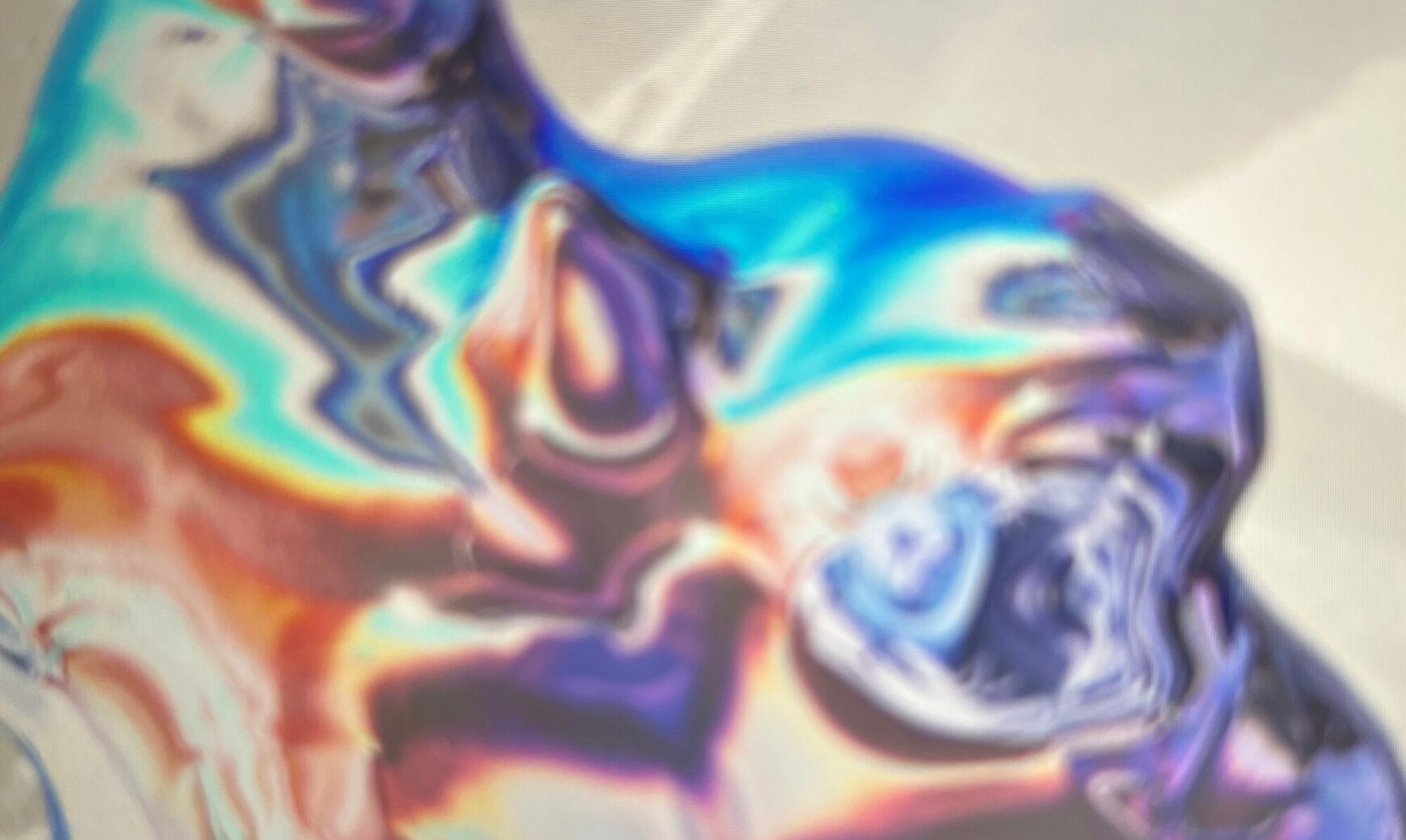Kim Blevins: Identity and New Media
From fine art photographer to a new media artist, my work has always been about core Identity. Identity is currently changing in the 21st century landscape. Since 2011, I have been a digital artist using the glitch or alternatives to photo editing programs that randomize imagery. Making new results and challenging conventional beauty with the element of chance.
Cher Cornett: Dissecting Pattern Disruptions
The ability to recognize pattern is a fundamental function of the human brain that allows us to take in and quickly understand our environments, from recognizing individuals, knowing when a siren means “pull over”, navigating a safe way to walk through a swamp, or interpreting a logo. We identify patterns with meaning, and as artists, we adapt and abstract pattern in a purposeful way that takes advantage of learned pattern memory to help tell our story.
Though we tend to think of pattern as a rhythmic repetition of a sensory element as in the visual repetition of design in wallpaper or the rhythmic repeats in song structure, pattern can be very complex, and not always involve repetition or be uniform. Our minds recognize and enjoy patterns, and a rhythmic, seemingly repeated pattern can have a calming psychological effect on the viewer. But what happens when that pattern is interrupted by irregularities; elements that break the rhythm? The effect can grab our attention by being unexpected, and even be disturbing. It can also provide the visual clues to a story. We want to know what caused this disruption. How did it happen? Why did the “signal” get broken?
In the series “Signal Disrupted” the idea of colliding signal disruptions from broadcast media combined with random pattern generators from mobile phone apps were explored. The original meaning of the broadcast image is lost, and new meaning has emerged that is related to, but not dependent on the original signal.
Kristen Lillvis: From Theory to Art (and Back Again)
This artist talk explores how glitch theory readings by Jenny Sundén, Legacy Russell, and others inspired the work “Glitch.” The talk will also explore how the process of making glitch art in Twine led the creator to teach a graduate course on glitch theory and assign students the task of creating glitch art.
Paul Echeverria: The Untutored Eye: Glitch as a Metaphor for Early Vision
I have a few memorable images from early childhood. The intense glow of a setting sun as it sinks into the horizon. A faint glimmer of light inside the confines of a darkened hospital room. The visuals are typically partial and fragmented. The detail from these images seems to dissolve with each passing year. In many instances, the memories wander into the theoretical domain of glitch aesthetics. In The Untutored Eye: Glitch as a Metaphor for Early Vision, I will discuss the connection between glitch imagery and childhood vision. Are glitch aesthetics relevant in the reconstruction of childhood memory? Does glitch contain an evolutionary role within the stages of pre-language vision?
Marc Manke: Hunt, Hide, Hey!: re-purposing digital queer visuals in the rural midwest
The internet has long been an open field for queer communtity and has become an integral part of its life and visual language. The optional anonymity of chatrooms and dating apps provides an added layer of protection and camouflage to a community that still faces physical violence and discrimination (and ways to connect to one another). This network of anonymity is even more important for those in small communities that do not have the option to hide away in crowds or meet in gay bars. But what happens when the network doesn’t quite reach you? This is a reality for rural queers – Rural communities still lack the reliable internet we enjoy in towns and cities. Hunt, hide, Hey! is an imagined visual language that incorporates the digital language of queer comunities like @queerapalachia, the history of gay flaging and crusing, and HIV prevention to offer some protection for when you might be stuck with no signal in the sticks.
